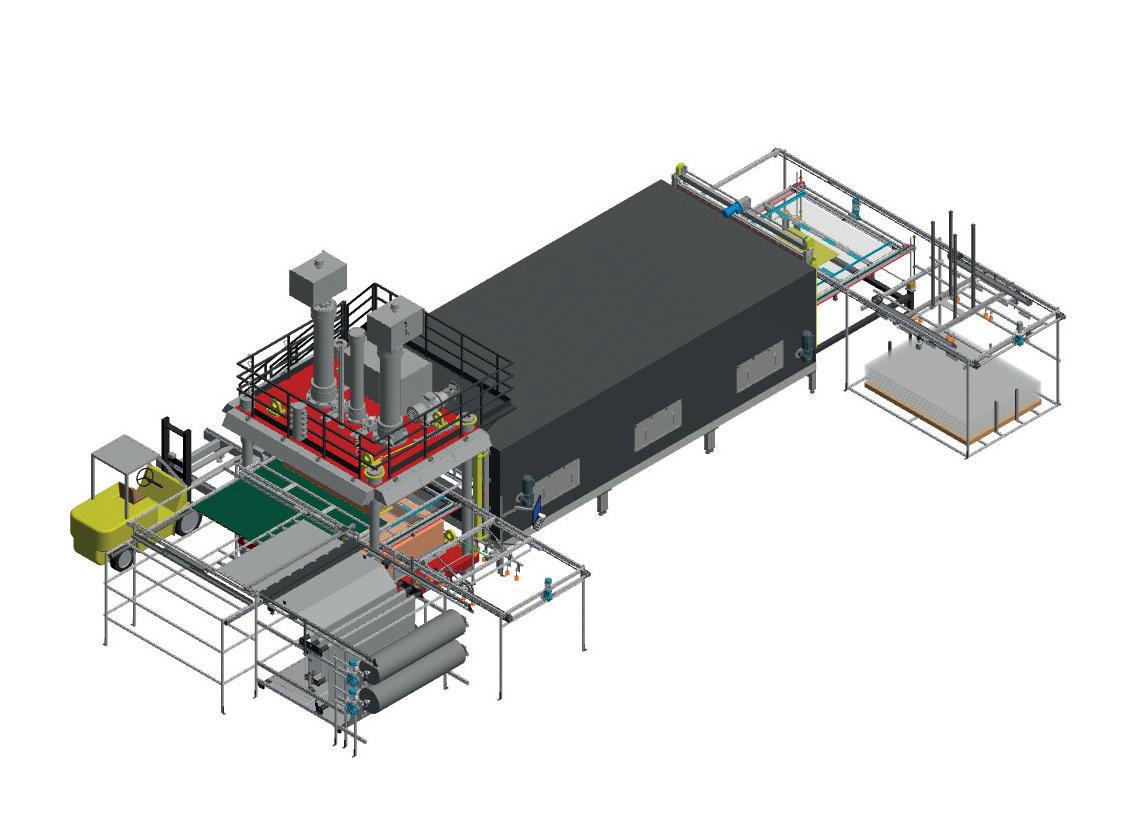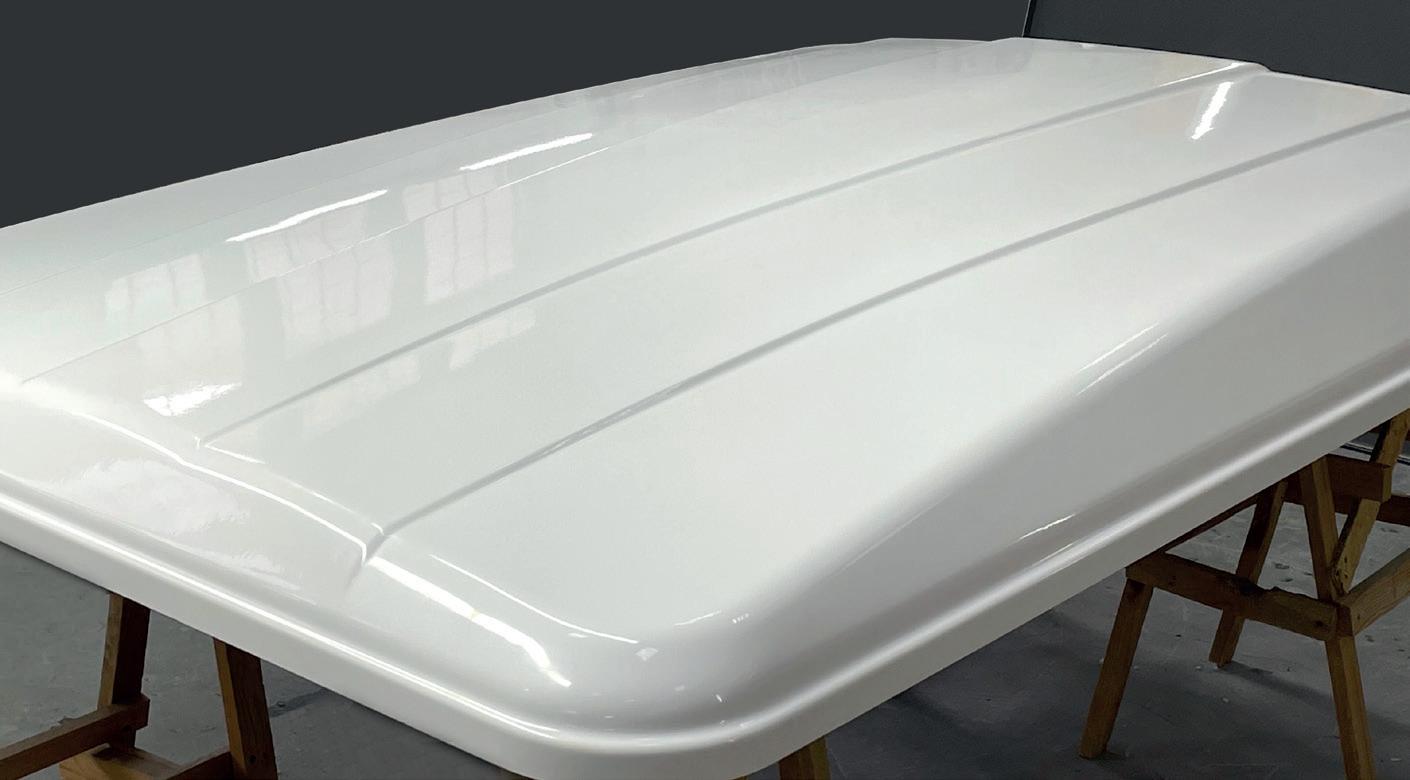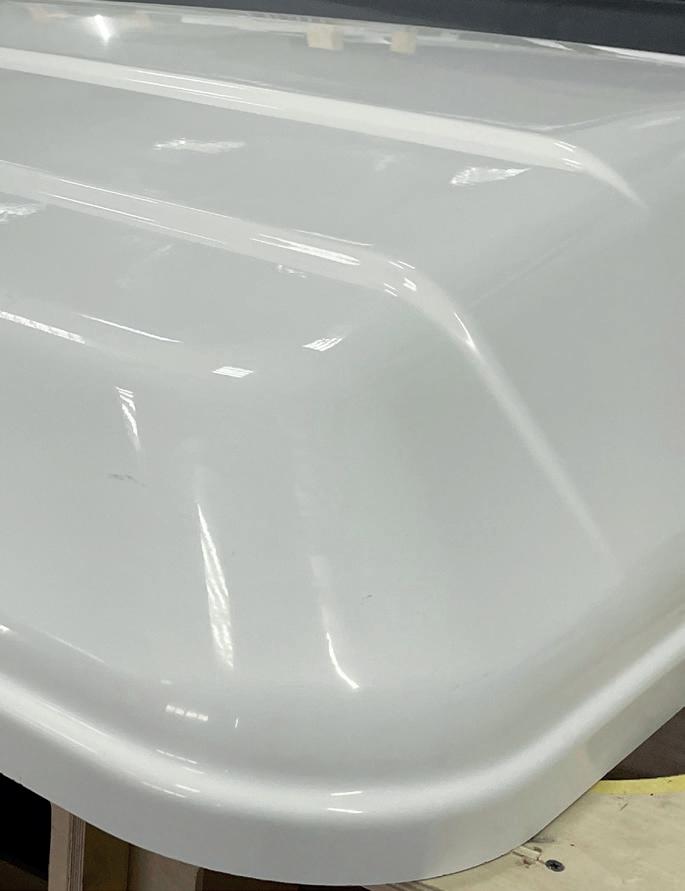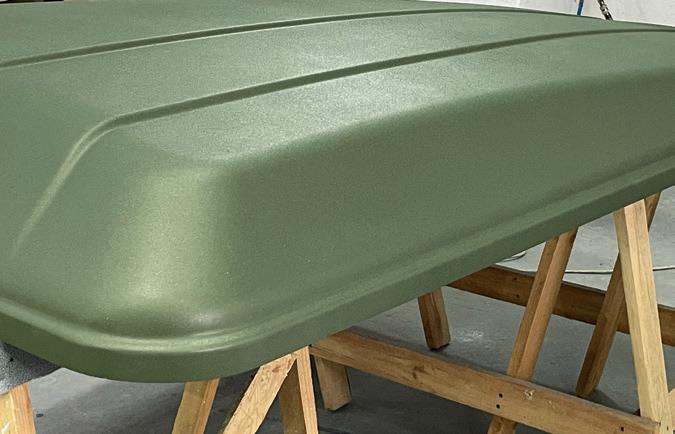
4 minute read
Ama Composites
Investing in the future
The company is investing in next-generation materials and production processes that are a refreshing change for the RV sector. The focus on the camper van market is strong with LWRT lightweight panels and several pop-up roof solutions
Words Renato Antonini
Ama Composites is investing in innovative materials and techniques to bolster its presence in the automotive sector as a whole and the RV sector in particular. The arrival of a new machine just a few days ago is opening up exciting new production scenarios. The Italian company has a well-established presence in the motorised recreational vehicle sector and is currently expressing its full potential in the camper van segment. The Ama Composites technology focuses on LWRT (Lightweight Reinforced Thermoplastics) to interpret a new way of building and carry the typical methods and materials of the automotive sector over to the RV world. “After fifteen years in the RV industry, our mission is very much the same,” said Marco Corradini, CEO of Ama Composites. “We want to bring innovation at many levels. We have always dedicated at least 3% of our turnover to R&D and we believe that LWRT is the ideal material to overcome the limitations of conventional construction methods in the RV industry. This technology is widely employed in the automotive sector and combines four key properties: lightness, dimensional stability, low cost and good appearance. LWRT technology can be used to make even large-size complex parts that become an integral part of motorhomes, campervans and caravans”. The investments for future growth are considerable. A new high-productivity LWRT stamping line will be operational already in December. This is an important machine used for productions for automotive applications and part of a very specific choice to promote penetration in various areas, including light commercial vehicles, buses, industrial vehicles, motorhomes and campervans, but also ships. Other machines, like the new twinhead water-jet cutting robot cells, will be delivered in early 2022. A new dosing system for adhesives will also be adopted in 2022. “We are still investing in the future,” explained Marco Corradini. “We have set ourselves ambitious targets and we are confident that we will achieve them by the end of 2022. The new machine installed in our factory will give us a potential production capacity of at least three times today’s.” An important part of Ama Composites’ production in the RV sector is dedicated to the interior panels to be applied inside the metal body of camper vans. Products include the all-important lining panels installed in the rear of camper vans, where the bed is normally located, in addition to wheel arch covers (inside the passenger compartment) and lining panels for hinged rear doors and sliding side doors. The LWRT elements can be paired with finishing and insulation materials to offer RV manufacturers finished parts that do not need any additional manufacturing steps. One of the key features of LWRT parts is that they are lighter but just as strong (they are up to five times lighter than simple thermoformed parts and up to ten times lighter than the corresponding fibreglass moulded parts). They are also easy to clean and mould-proof.
The expansion of the Ukrainian plant


Above: design of the new machinery intended to significantly expand the production capacity of Ama Composites


Pop-up roofs
Pop-up roofs are a new area of interest for Ama Composites. A pop-up roof is a strongly characterising element of the latest camper van models that are becoming increasingly successful on the European market, with scope for further growth. Ama Composites has set up a specific production line at its branch in Ukraine for making pop-up roofs using GRIT (Gloss Resin Impregnated Thermoplastic) technology, with excellent results. Large parts are made using one-shot processes at low costs. The new plant in L’viv (formerly known as Leopolis) is part of the current investment plan. It has a covered area of 2500 square metres, to which an extension of a further 2500 square metres will soon be added. The factory is located in Ukraine not far from the Polish border to be close to the booming German market. Ama Composites can also offer various popup roof solutions, some of which combine various materials. For instance, pre-assembled LWRT panels can be bonded to the inside of the roof as lining and an integrated heating system, using the Amatherm technology developed by the company can be added, if required. The capability of Ama Composites to bring together different technologies, making specific couplings should not be underestimated, and nor should the ability to integrate parts of the electrical system or heating system into the mould. By combining different technologies, Ama Composites claims a potential weight reduction of 25-35% for its pop-up roofs compared to traditional technologies. Finally, special exterior paint is offered as an alternative to the conventional exterior gelcoat. It is remarkably resistant to scratches, salt spray and UV rays. The pop-up roof range also features rooftop tents, a very special product in high demand in some markets, not only in Europe. Ama Composites has also been working in this area for several months now, producing the protective shell and structure of the rooftop tents with integrated lining, internal finishes and lateral closing systems.

Marco Corradini













